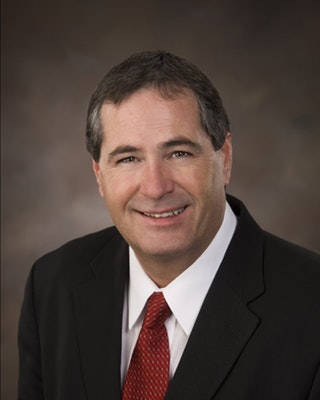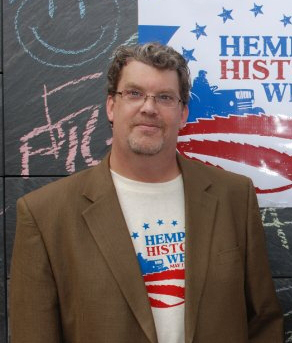The legalization of hemp in the 2018 farm bill has led to enthusiasm for the plant’s market prospects, but experts say farmers need to be careful before they leap headlong into the industry.
“Jump in with both feet cautiously,” says hemp farmer and entrepreneur Franny Tacy of Franny’s Farm (and Franny’s Farmacy) in North Carolina. “Don’t invest in anything you can’t afford to lose. This still is an emerging industry.”
Before growing, “Make sure that you have a buyer,” says Ken Anderson, founder and president of Legacy Hemp in California, which contracts with farmers who grow about 5,000 acres of hemp. “Otherwise you’re growing the crop to learn how to do it, and that can be very expensive to do.”
And North Dakota Agriculture Commissioner Doug Goehring says his message to those who want to get into hemp is “please, please get engaged with those in the market. There are still some guys who planted who are selling it out of their house.”
Goehring is referring to growers who produced hemp under a pilot program included in the 2014 farm bill, which led to the planting of 78,000 acres in 23 states last year — including about 3,000 acres in North Dakota.
The purpose of that program, which was research, got hemp in the door of American agriculture. Now the farm bill has flung that door wide open.

North Dakota Ag Commissioner Doug Goehring
The bill removed hemp from the Drug Enforcement Administration’s classification as a Schedule 1 controlled substance, the same category as heroin and LSD, and put USDA in charge of the plant. The farm bill requires states that want to plant hemp to submit plans to USDA, which has 60 days to review them. USDA also is supposed to develop regulations for the growing of hemp in states that do not want to be the prime regulatory authority.
Eric Steenstra, president of Vote Hemp, said he did not expect the regulations to be out for 18 to 24 months. USDA did not respond to questions about the hemp program.
Pennsylvania was quick to submit its plan to the department, saying the farm bill had created “an exciting opportunity for industrial hemp in Pennsylvania.” Under the plan, acreage caps, which had been set under the pilot program at 100 acres, have been lifted in the state for 84 applicants who had been approved under the old program. “Additionally, there will not be a cap on the number of applications accepted for 2019,” the state said.
A critical requirement is that the hemp not contain more than 0.3 percent of tetrahydrocannabinol (THC), the psychoactive substance contained in marijuana in much larger quantities than hemp.
But North Dakota’s Goehring and others in the industry are worried about too much hemp flooding the market and depressing prices, as happened in Canada after that country legalized industrial hemp production in 1998.
“I know we can meet the supply,” Goehring said, echoing what Agriculture Secretary Sonny Perdue told him in a meeting earlier this month. But Perdue also told Goehring he was concerned there might be too much supply.
“We have to be very cautious about the excitement on the production side,” Anderson said. “It has to follow the markets developing.”
One problem is a lack of processors in many states to handle hemp, which can be used in many ways: the flowers can produce cannabidiol (CBD), the product being touted as a treatment for, among other things, physical pain, anxiety (in humans and pets), and sleeplessness. The seed can be pressed to extract oil for food; and the stalks can be used for textiles or industrial materials such as hempcrete. A professor at Clarkson University in New York has found hemp can be substituted for graphene in semiconductors, with better performance and less cost.
Steenstra said one big example of the excitement generated by the farm bill is a recent announcement by Canopy Growth, a Canadian marijuana company (stock ticker: WEED), that it plans to invest $100 million to $150 million in an industrial hemp plant in New York state that will produce tons of hemp extract annually.

Eric Steenstra, Vote Hemp
Sen. Charles Schumer, D-N.Y., hailed the development, saying he hopes Canopy Growth can help make the Southern Tier of New York “the Silicon Valley of industrial hemp production and research.”
All over the country, “There are people who are trying to attract the hemp business,” Steenstra said.
"A ton of farmers want to jump in," said Todd Van Hoose, president and CEO of the Farm Credit Council. "It's a little bit of a free-for-all." But he, like others, said growers need to exercise caution. "There's a whole lot of work to do to figure out how to sell it."
Goehring says growers need to educate themselves on the market to know what will sell. He talked up a variety of products, such as hemp soap and flour, but said, “What we’d probably like to see going forward is utilization of the fiber.” Very few investors, however, have put money toward fiber processing, Steenstra said.
Market development is something Roger Gussiaas knows about. Gussiaas, who owns Healthy Oilseeds in the east-central town of Carrington, N.D., is an oilseed grower and processor who has done business in 22 countries and 40-45 states, producing oil for food products. The byproduct, hemp cake or hemp meal, can be used to make protein powder, which Gussiaas says is “ready to take off.” Hemp seed is high in protein and two essential fatty acids, omega-6 and omega-3.
Asked about business, Gussiaas says, “It’s going well, really well. We’re processing 24 hours a day, seven days a week.”
It's going so well, Gussiaas plans to open another plant in Montana, where 22,000 acres were planted in hemp last year, the most of any state.
His advice for farmers who are choosing a processor: "Make sure the processor is licensed and bonded. That's very important."
For more news, go to www.Agri-Pulse.com
Correction: The original version of this article had an incorrect title for Eric Steenstra. He is president of Vote Hemp. We regret the error.


